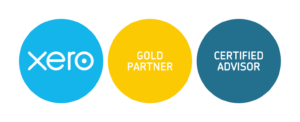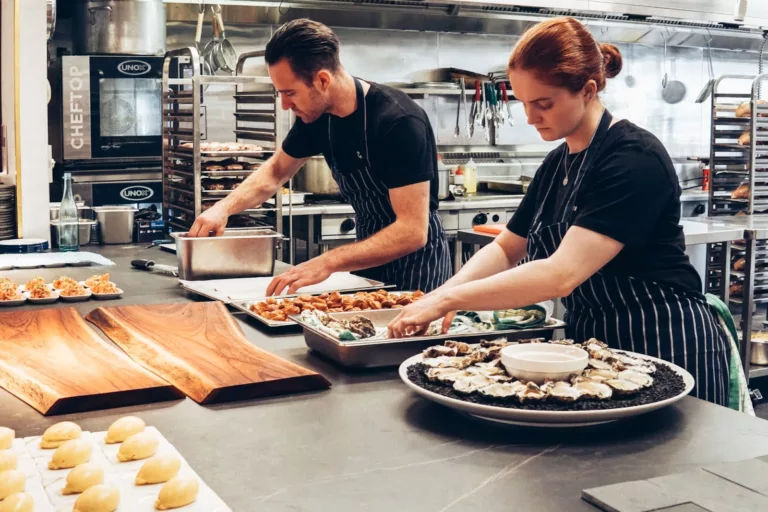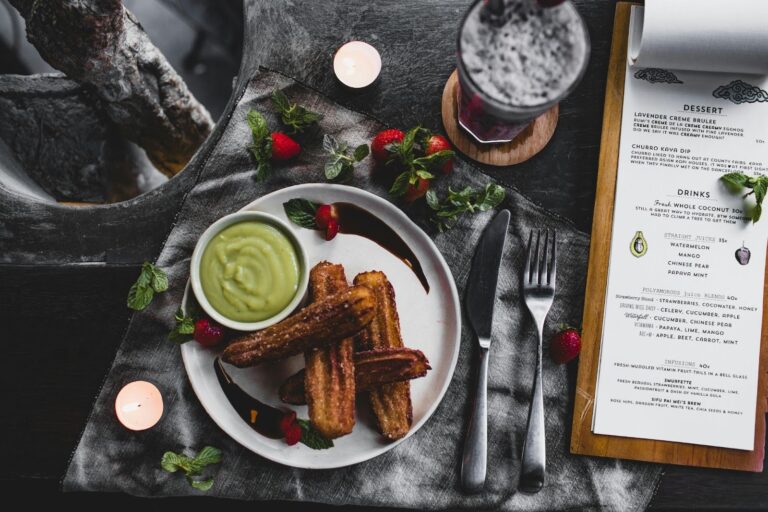The Non-Sloppy Approach to Restaurant Bookkeeping: A Step-by-Step Guide

If you’re reading this, you may or may not know just how important bookkeeping is to a business.
As experienced restaurant accountants who have seen many restaurants succeed… and many restaurants fail… take it from us: accurate restaurant bookkeeping is the key to a successful business.
Accurate numbers lead to bigger profits. You budget better, you’re able to better predict cash flow, you can plan for big expenses, and ultimately can prepare your business for growth.
But unfortunately, many business owners struggle to keep their records accurate. There’s a big difference between sloppily doing bookkeeping, and doing it right.
So, whether you’re just starting out with your restaurant or simply want to improve your recordkeeping, we’re here to offer some practical tips.
Let’s start at the beginning.
What is Restaurant Bookkeeping?
Have you ever kept a journal of what’s going on in your life? Well, restaurant bookkeeping is essentially journaling the financial goings-on in your restaurant.
How much money are you spending and making? What are the costs of the ingredients, the labor, and the preparation of your meals and beverages? What are the running costs of your establishment? Is your business profitable?
You can answer all these questions with your journal entries.
There are also different ways of compiling these records, such as spreadsheets or dedicated bookkeeping software.
What You’ll Be Tracking
When we talk about bookkeeping, there’s a lot to consider. Which is probably why so many business owners put off the task of monthly bookkeeping, or take shortcuts.
As part of your general bookkeeping, you’ll need to do the following tasks at the end of every month:
- Record your financial transactions: Jot down all the money stuff, like sales, purchases, and payments to your employees. Whether you keep this in a spreadsheet or in bookkeeping software, you’ll need to account for every financial transaction that happened within the business.
- Reconcile your bank statements: Check that your own money records match what your bank says. This can be quite tedious, but you’ll need to go line by line to ensure that the financial transactions you kept in step #1 match and clear your bank statements. Both should “match” down to the penny.
- Manage accounts payable and receivable: You’ll also need to collect your sales invoices and pay your staff. Essentially, keep track of what you need to pay others and what others owe you.
- Manage your inventory: Inventory tracking is an important part of the bookkeeping process. Keep an eye on ingredients, logistics costs, and portion sizes to ensure the cost of meals aren’t inflating.
- Prepare financial reports: Finally, you’ll need to keep records of everything that happened and analyze the financial health of your business. You can create summaries of your restaurant’s money situation, like your earnings, assets, and cash flow, using important financial statements like the Profit & Loss Statement (P&L).
It’s worth all the effort because when you master your bookkeeping, you discover ways to improve your business. But you can only do this with accurate record-keeping.
5 Tips For Improving Your Restaurant Bookkeeping
Here are our tips for more accurate restaurant bookkeeping:
1. Choose the Right Software
Regardless of how good (or bad) your accounting skills are, the right software can turn you into a bookkeeping pro. The wrong software, on the other hand, just creates confusion.
For example, if you’re using QuickBooks for your bookkeeping software, your records might be inaccurate. It doesn’t allow you to run reports on the 13-month rolling period typically used for restaurants and bars.
Our first tip is to switch to software that does allow this – like Xero.
We’ve written a lot of resources on why Xero is the superior bookkeeping software for restaurants—if interested, you can start with this playlist here.
The short story is:
Xero is designed 100% for the Cloud. It’s also customizable, with a superior AI, and most importantly, it supports custom dates for implementing the 13-month restaurant calendar.
And that’s not all. It lets you organize costs by prime costs (food, beverage, direct labor), controllable costs (negotiable operating expenses), and non-controllable costs (non-negotiable expenses like rent). You can also run unique gross and profit margin formulas for these cost structures.
Overall, if you take nothing away from the rest of this blog, take this: you need to be using Xero for your bookkeeping software if you own a bar or restaurant.
2. Integrate your Bookkeeping Software with Your Systems
When it comes to keeping accurate records, you’ll want to automate as much as possible.
Which is why our next tip for successful restaurant bookkeeping is to make sure that your bookkeeping software integrates with your existing systems, especially your POS and inventory management software.
Inventory management software tracks what food and drink items are coming in and what’s used. By integrating inventory management and bookkeeping software, you’ll know exactly what you need (and what it costs) to provide your food and beverage products.
You’ll see where money is wasted on unused perishables, so you can tailor orders, reduce waste, and save money.
On the other hand, POS software provides important sales data like what items were sold and at what price, which is vital for bookkeeping.
When your bookkeeping software works with your POS system, it automatically updates your financial records with this sales information, making it quicker and easier to track expenses and income.
3. Record POS Sales Daily
Now, let’s talk about another crucial aspect of restaurant bookkeeping: recording your Point-of-Sale (POS) sales daily.
It’s easy for discrepancies to creep in when POS entries are delayed. They can be overlooked, leading to inaccurate financial records. Keep things accurate by recording all your revenue – including Point-of-Sale (POS) data – daily.
Of course, electronic POS terminals experience technical difficulties every now and then, and online order portals for food deliveries sometimes go offline. When this happens, make sure you keep a separate record of these sales.
4. Review Your P&L Monthly
It’s one thing to have accurate bookkeeping, it’s another to use it to improve the growth of your business.
So, as part of your monthly bookkeeping routine, take a look at your Profit and Loss statement—it’s like your restaurant’s financial report card. Check if your profits match up with what you’re expecting.
For restaurants, a good profit margin (that’s the money left after you’ve paid all your bills) is usually between 3% and 9%. If it’s over 10%, that’s even better!
There are two types of profit margins: gross and net. Gross profit is what’s left after you’ve covered the cost of making your food and drinks. Net profit is what’s left after you’ve paid for everything else, like rent and salaries.By checking your restaurant Profit and Loss statement regularly, you’ll see if your restaurant is making enough money to cover its costs. If not, you can spot problems early and fix them before they get worse.
5. Monitor & Reduce Costs
Finally, when you reduce costs, you open the door to higher profits.
Every month, you should be monitoring your expenses to reduce costs where possible and correct any negative trends you’ve identified on your P&L.
There are many ways to improve your operational cost-efficiency. For instance, you could choose a more affordable location or revise your insurance coverage. Simpler solutions include automating inventory management, negotiating better prices with suppliers, and adjusting menu portions/pricing.
However, if your quality declines in the process, it will negatively impact your revenue. That’s why it’s important to not only monitor what needs changing but also to keep an eye on the results after those changes.
Need Additional Help With Your Restaurant Bookkeeping?
That’s it! We hope this helps fine-tune your bookkeeping and makes it a little easier to get right.
Regular bookkeeping can be a hassle to do and keep up with, but it’s an essential part of running a successful business.
If you’re finding it tough to juggle restaurant duties and bookkeeping, we’ve got you covered. At U-Nique Accounting, our team specializes in helping restaurant owners with their monthly bookkeeping, alongside other things like financial forecasting, growth planning, and tax savings.
Whether you need guidance understanding your numbers or want someone to handle your finances for you, we’re just a message away.
Simply book time on our calendar down below or fill in the form on our Getting Started page to get started.
Until next time!

By MATT CIANCIARULO



